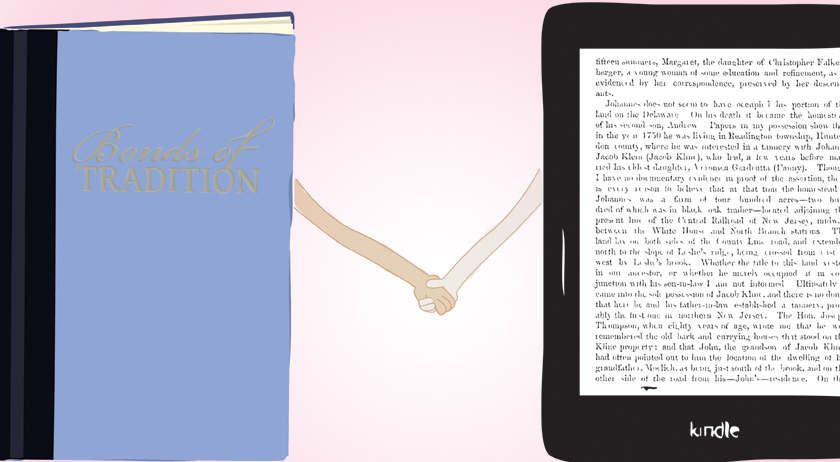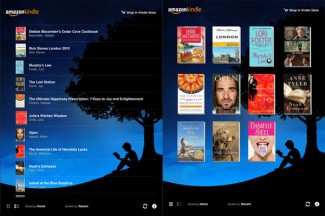When I was in high school, my dad bought me a Kindle. The year was 2009 and the Kindle (any electronic reader for that matter) was brand new technology. My high school did not allow for the use of cellphones, personal devices, or anything really that could connect to the Internet. Blended learning hadn’t hit my school yet.
Now, the first generation Kindle was revolutionary, no doubt about it, but it couldn’t really do anything else besides connect to the Amazon store to download a book. I brought my Kindle to school and took it out to read during some free time in class. My teacher was wary, fearing I would be online or off task, but after realizing I was just reading, I was allowed to continue using it.
But later that day, when I pulled the Kindle out at lunch, an administrator in the school approached me, asked me about the device, and then told me to put it away. I grumbled something to the effect of “this is for reading. I can’t do anything else but read a book or buy another book with it.” The administrator eventually agreed to let me keep my Kindle out, stipulating that I should only be using it for reading. I had already said that was all it could do. He just didn’t get it.
[cjphs_content_placeholder id=”73589″ random=”no” ]As frustrating as this was for me, a teenager who wanted to read, in retrospect this anecdote is amusing. It also serves to illustrate just how much we’ve progressed when it comes to technology in schools. Schools across the country have changed their ways, their rules, and their restrictions in such a short amount of time. Technology bans are being replaced by B.Y.O.D (bring your own device) policies, districts fight for 1-1 policies, and teachers who used to beg their students to put away their cellphones are now asking them to take them out to participate and engage in an activity. Blended learning programs, combining traditional strategies with digital strategies and technologies, are moving into schools and people are realizing that reading is reading.
In another post I’ll address the differences between reading online and reading traditional texts, so if you’re feeling like there’s a grey area, know that I’m right there with you — and so is the rest of the world because this whole area of study is so new. For now, though, I’ll just say that whether your nose is between the pages of a book or your eyes are glued to the screen, you are reading.
Electronic readers like the Kindle and Nook have found ways to get reluctant readers to plug-in to reading. Further, they offer incredible access to books and knowledge. Whether through a dedicated reader (a device that you can only read or download more things to read on) or a tablet, kids have millions of ebooks, magazines, articles, websites, and audiobooks at their fingertips.
Technology has advanced to the point that it now accommodates for different reading styles and preferences. Electronic reading and online reading can be very engaging for kids in particular as digital media often has interactive elements, non-linear structures, immediate access to more information, and tends to be multimodal (combining text, images, video, audio, etc.). With the tap of your finger, you can adjust the color of the pages, font size, and layout of an eBook. On phones, tablets, and laptops you can turn on built-in text-to-speech tools that will read the text to you while you follow along, a great accessibility feature for struggling readers. Reading apps like Kindle, iBooks, Meet Heckerty, the Crack the Books series of interactive textbooks, and RSS readers like Unread help kids read and learn independently. These new formats for reading require a whole new set of skills (which I’ll get to in another post).
This is not to say printed books no longer have merit. They offer readers the opportunity to develop essential skills required for both traditional reading and digital reading. Plus, some students may find it easier to focus when reading a traditional book since they tend to be linear and distraction free. Your child may even like the “feel” of a traditional book better than an e-book. I tend to be somewhere in the middle. I love ebooks for academic reading because I can “mark up” the text and easily look up a word I don’t know. For pleasure reading, I tend to opt for a traditional printed book (right now I’m reading Harry Potter and the Goblet of Fire).
In I Can Read with My Eyes Shut! Dr. Seuss wrote, “the more that you read, the more things you will know. The more that you learn, the more places you’ll go.” Yet, parents and teachers alike are hesitant to swap traditional printed books with electronic readers since doing so adds to a child’s screen time. But if the goal is to get kids to spend time reading, why fight their chosen medium? Try reading in both formats and see what works for you and your child. No matter what you choose, you’ll be reading, and that’s the point.
Featured artwork: Leah Watkins, 2015





